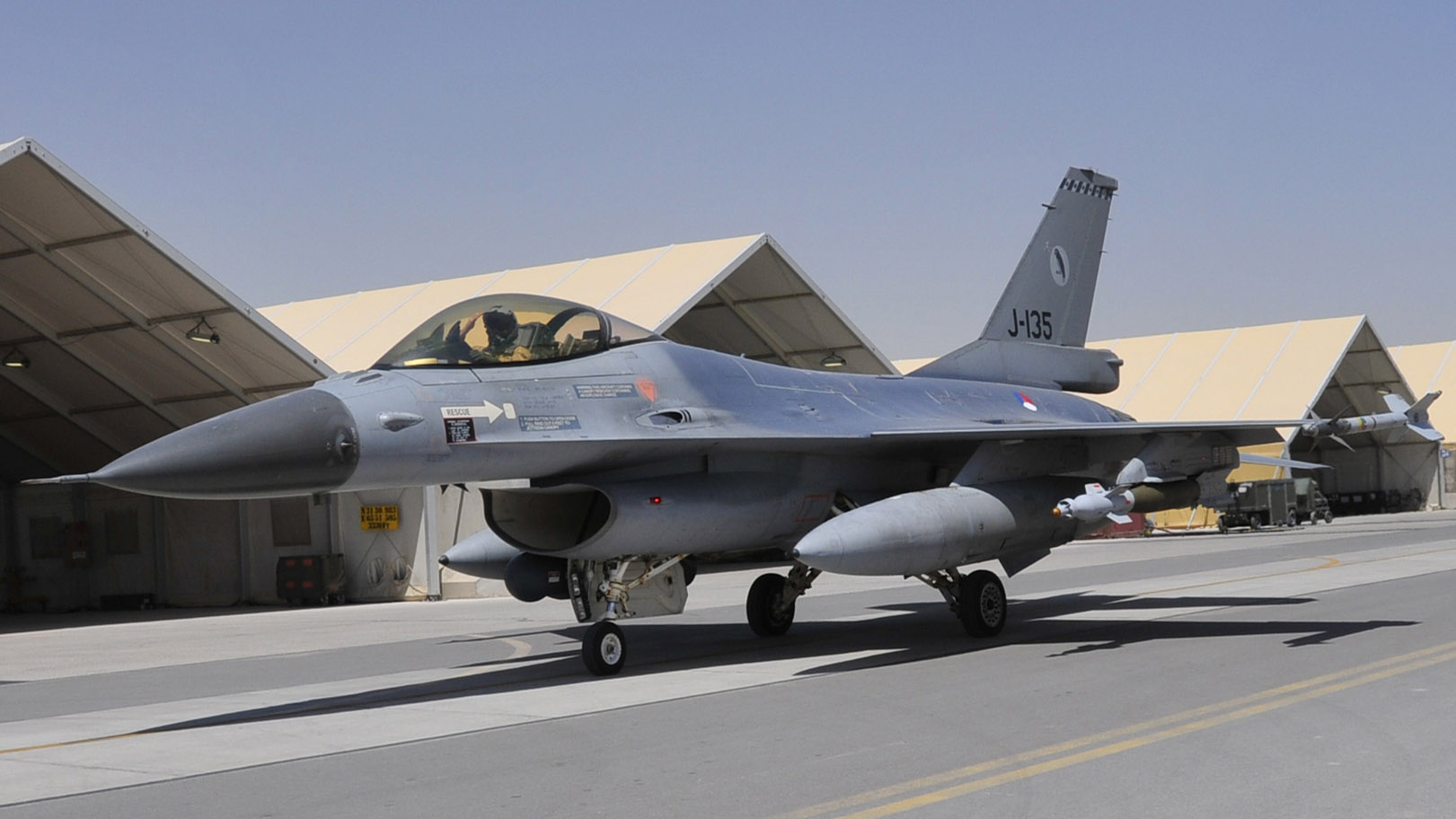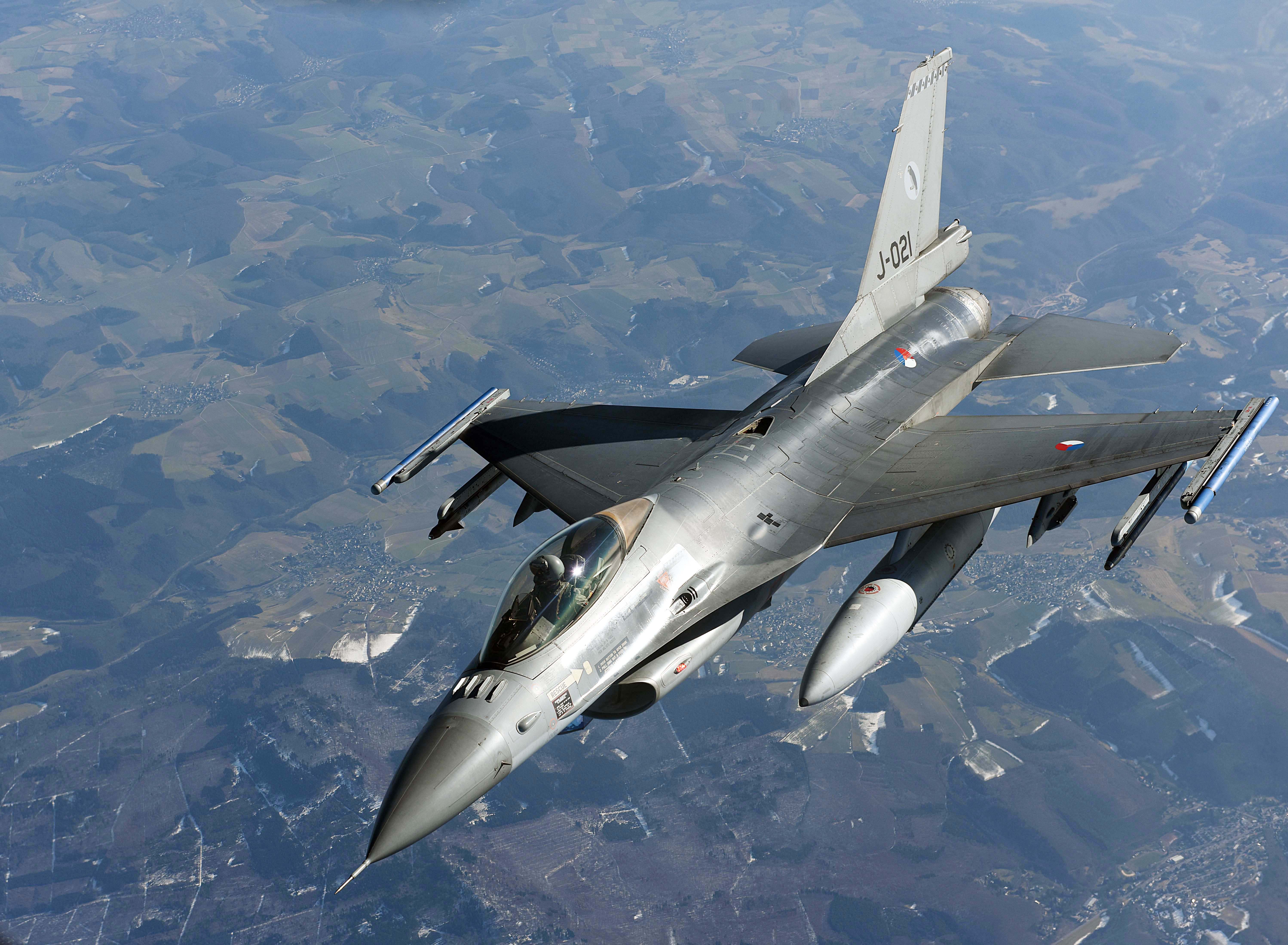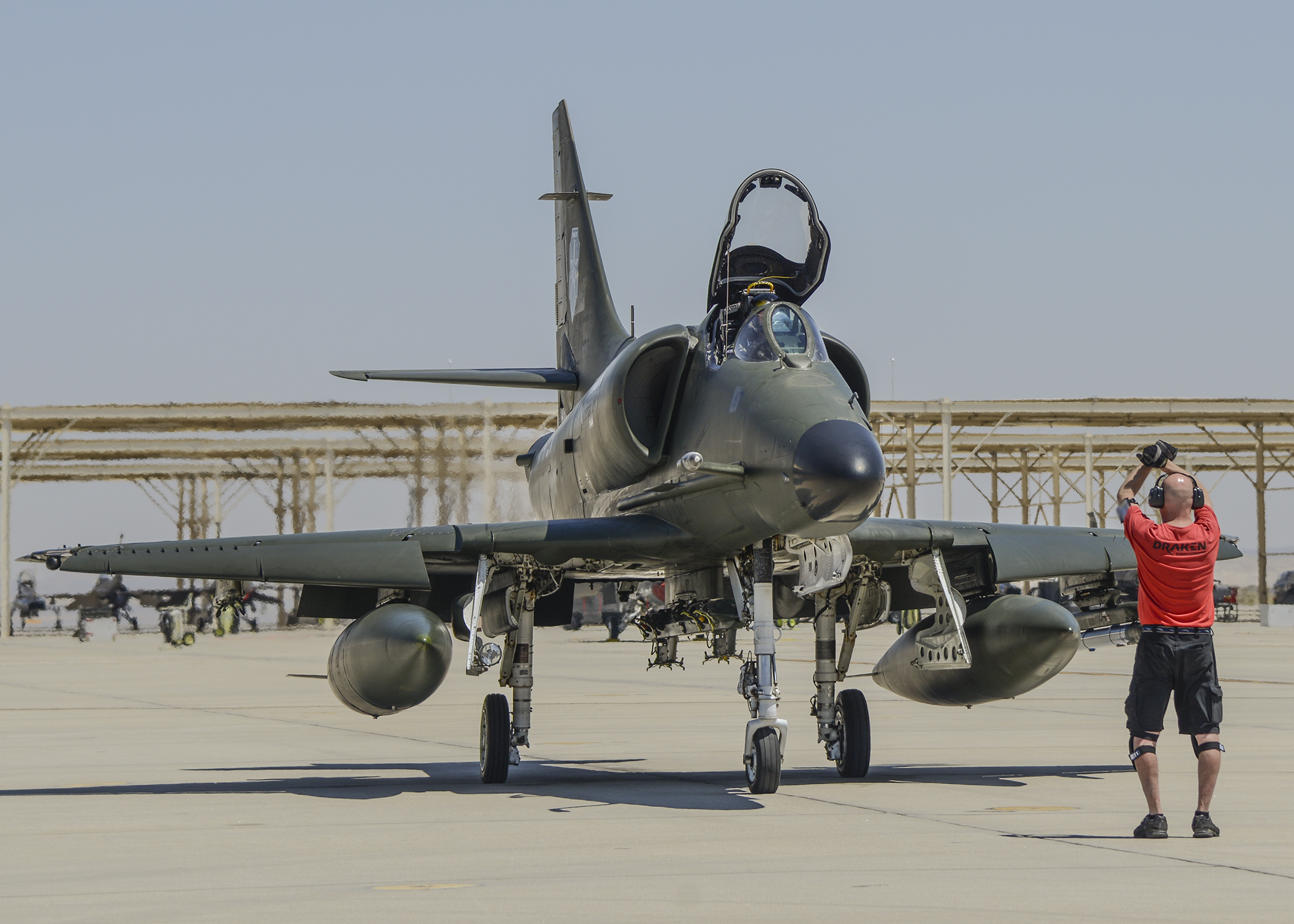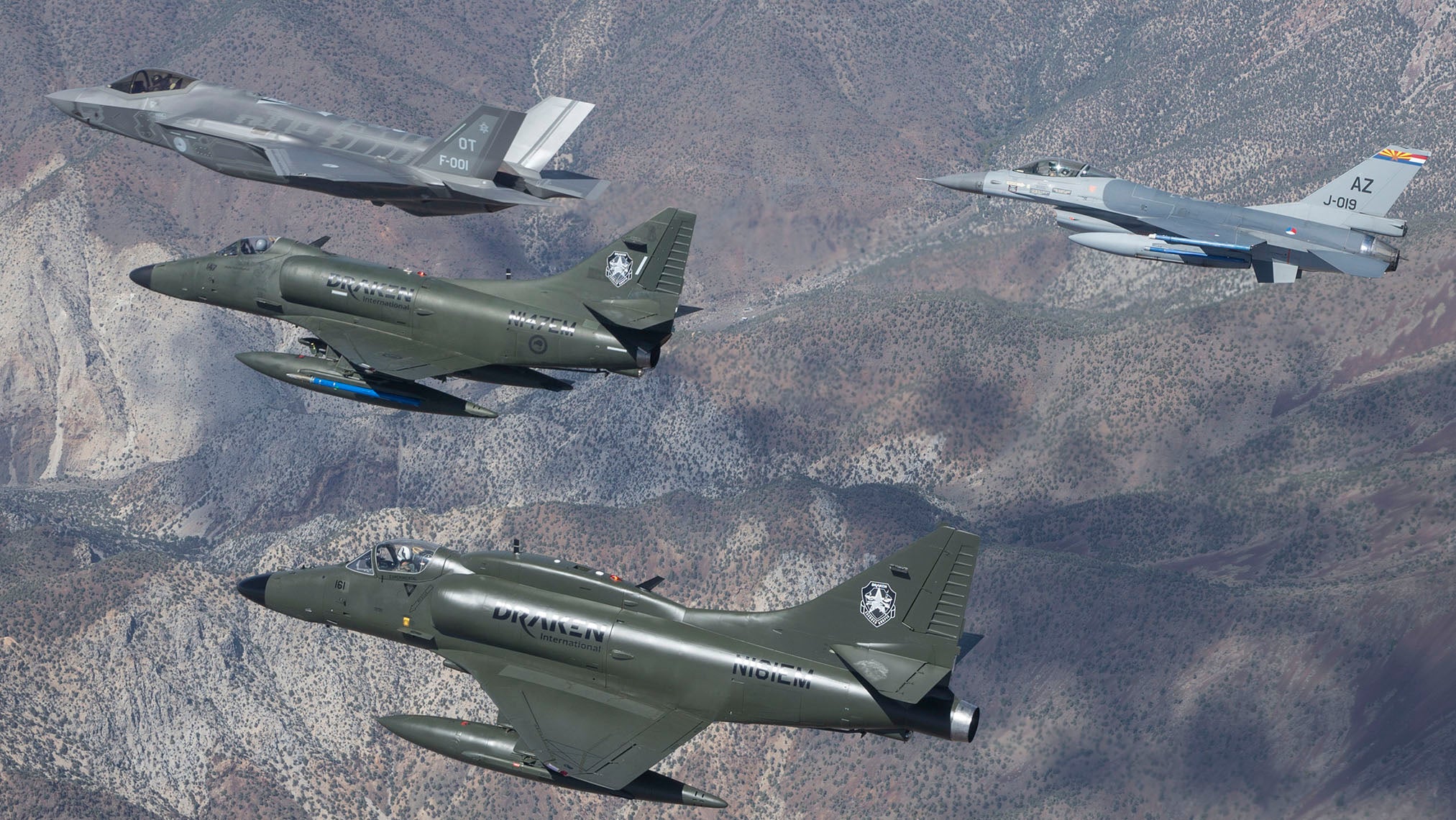Draken International, the adversary air support contractor which boasts one of the world’s largest private tactical jet air forces, is now set to add F-16A/B fighters to its roster after the Dutch government announced it had agreed to transfer 12 of the jets to the North American company. Draken will join fellow private contractor Top Aces in operating F-16s for “red air” adversary support, which is now in great demand, especially to fulfill the U.S. Air Force’s mammoth adversary air contract.
In a letter published today, the Dutch Secretary of State for Defense, Barbara Visser, confirmed that an agreement had been reached for the sale of a dozen ex-Royal Netherlands Air Force (RNLAF) F-16A/Bs plus associated unspecified items.

“Draken International has been contracted by the U.S. government for years to take on the role of the enemy in U.S. Air Force and Navy exercises,” the letter explains. “These aircraft will be used exclusively on the basis of government contracts for support tasks during (inter)national exercises and training on American territory.”
The F-16A/Bs are becoming available as part of the RNLAF’s planned phase-out of the jet, or End Life of Type (ELOT) program. The 12 jets in question are due to become surplus next year, as deliveries of F-35A stealth fighters to the RNLAF continue. The Dutch have committed to buying at least 46 F-35As, and deliveries to the Netherlands began in late 2019. The latest divestment of the Dutch Vipers has already begun, with one single-seat example having been sold to Belgium under a deal announced last August. Previously, batches of aircraft had also been sold to Chile and to Jordan, as part of an earlier fleet reduction during the 2000s.
As well as the 12 Vipers earmarked for Draken, the Dutch government has announced an option for the same firm to acquire another 28 examples, which are planned to be retired from RNLAF service by the end of 2024. Should that follow-on deal be taken up, Draken would end up with a fleet of 40 Vipers, compared to the 29 ex-Israeli F-16A/Bs that were acquired by rival Top Aces.
Now that details of the transfer of the first 12 jets have been agreed, and approval received from the relevant agencies in the Netherlands, the contract signature is likely to follow in the coming weeks, with deliveries to Draken beginning in 2022. Since the jets are covered by the U.S. International Traffic in Arms Regulations (ITAR), approval for this sale has been requested from the U.S. government.

The value of the deal has not been disclosed, the Dutch Ministry of Defense noting that this information is commercially confidential.
The Dutch acquired a fleet of 213 F-16s, beginning in 1979, and the original F-16A/B jets underwent the Mid Life Update (MLU) beginning in 1998, receiving the unofficial designation F-16AM/BM in the process. This effectively brought the jets up to a standard similar to the U.S. Air Force’s F-16C/D Block 50/52 and included a new modular mission computer, targeting pods, datalinks, GPS, night-vision goggle compatibility, and new precision-guided weapons. Incremental improvements have continued since via successive software upgrades.
Headquartered at Lakeland Linder International Airport, in Lakeland, Florida, Draken’s fleet already boasts two supersonic fighter jets for adversary work: a dozen ex-South African Atlas Cheetahs, and 22 ex-Spanish Air Force Mirage F1Ms. One of the latter jets was lost in a fatal crash near Nellis Air Force Base, Nevada, last month.
Draken’s extensive fleet also includes A-4 Skyhawks, L-159 Honey Badgers, L-39s, and MB339s. The company also owns dozens of MiG-21s, although they are not part of its regular operations.

The company’s Cheetahs and Mirage F1s already offer a high level of performance and are equipped with radars, with updates in the works to better represent fourth-generation threats. The F-16, on the other hand, is already a fourth-generation jet and its agility is legendary. It is no surprise that the Viper is an aggressor of choice for the U.S. Air Force and U.S. Navy, as well as civilian contractors.
In particular, more capable red air assets are required to adequately train pilots of advanced U.S. fighters like the F-35 Lightning II and F-22 Raptor. Older equipment, like Draken’s hard-worked A-4s, are simply unable to replicate the required level of threat. Even the Cheetah and Mirage fall short of the kind of all-round performance and capabilities offered by the F-16, which will be a much better match to the kinds of aircraft flown by potential near-peer adversaries.

It is notable that, not so long ago, it seemed that the growing demand for red air might be satisfied by older jets that could be upgraded to replicate fourth-generation platforms for this kind of work. When Draken acquired its Cheetahs, for example, much was made about how they could successfully emulate fourth-generation platforms. Similarly, in 2018 the U.S. Navy decided that upgraded F-5s were perfectly suitable for this work, passing on an F-16-based proposal.
In the meantime, it seems there has been something of a change, or at least a realization that true fourth-generation jets are the best option for high-end aggressor work. This could be as a result of China’s growing capabilities and to a lesser extent those of Russia, or perhaps just a reflection that more second-hand F-16s are now becoming available. There is also the factor of a lack of corporate knowledge as regards types like the Cheetah and Mirage, with few U.S. pilots and maintainers having experience of them. The case of the F-16 is very different indeed. Meanwhile, the Air Force has, more generally, been pursuing a crawl, walk, run approach to its dealings with contractor-supplied adversary firms, as Lieutenant Colonel Jan ‘Kuts’ Stahl explained to The War Zone in a wide-ranging interview:
“The fielding of contract aggressor forces was always intended to be a multi-year process in which initially we put jets on the line to fill more of the demand for quantity as opposed to the demand for quality. We then put measures in place that over a period of multiple years to stimulate the contract adversary industry to put some of these specific requirements and demands that we need in order to meet that quality benchmark, as well.”
Lieutenant Colonel Jan ‘Kuts’ Stahl
What is less clear, though, is whether the Air Force and Navy will be happy to pay the additional costs involved in operating high-end aggressors of this type. Until now, contractors have managed to provide financially attractive red air offers, leveraging the lower costs of operating less sophisticated types, like the A-4. The F-16s will likely cost substantially more to operate than even the third-generation jets, however.
As yet, we don’t know what kinds of upgrades will be undertaken for the Draken F-16A/Bs, although it’s likely they will follow a path similar to that taken by Top Aces for its ex-Israeli jets. This is based around an open mission system architecture with a new mission computer, AESA radar, helmet-mounted sight, and Link 16.

In the background to all this, of course, is the U.S. Air Force’s huge $6.4-billion contract opportunity for red air and close air support training at 12 different airbases throughout the United States. Draken is one of the companies to have received a share of an indefinite-delivery/indefinite-quantity (IDIQ) contract, alongside Air USA, Airborne Tactical Advantage Company, Tactical Air Support, and Top Aces. The contract runs until October 2024 and is likely to involve between 40,000 to 50,000 flying hours per year.
Beyond these requirements, there will be additional Air Force demand for contractor red air at other stateside bases, too, as well as in support of the U.S. military and its allies in Europe and the Pacific. The U.S. Navy has its own contractor adversary contract, as well, with ATAC and TacAir currently supporting this, but with further opportunities to follow in the future.
Although already at a NATO standard, the process of certifying the former Dutch F-16s for contractor aggressor work, and then upgrading them accordingly, won’t necessarily be a quick one. But with deliveries of the jets due to begin next year, we might not have to wait too long until a second contractor begins flying F-16 aggressor jets in the United States.
Contact the author: thomas@thedrive.com
